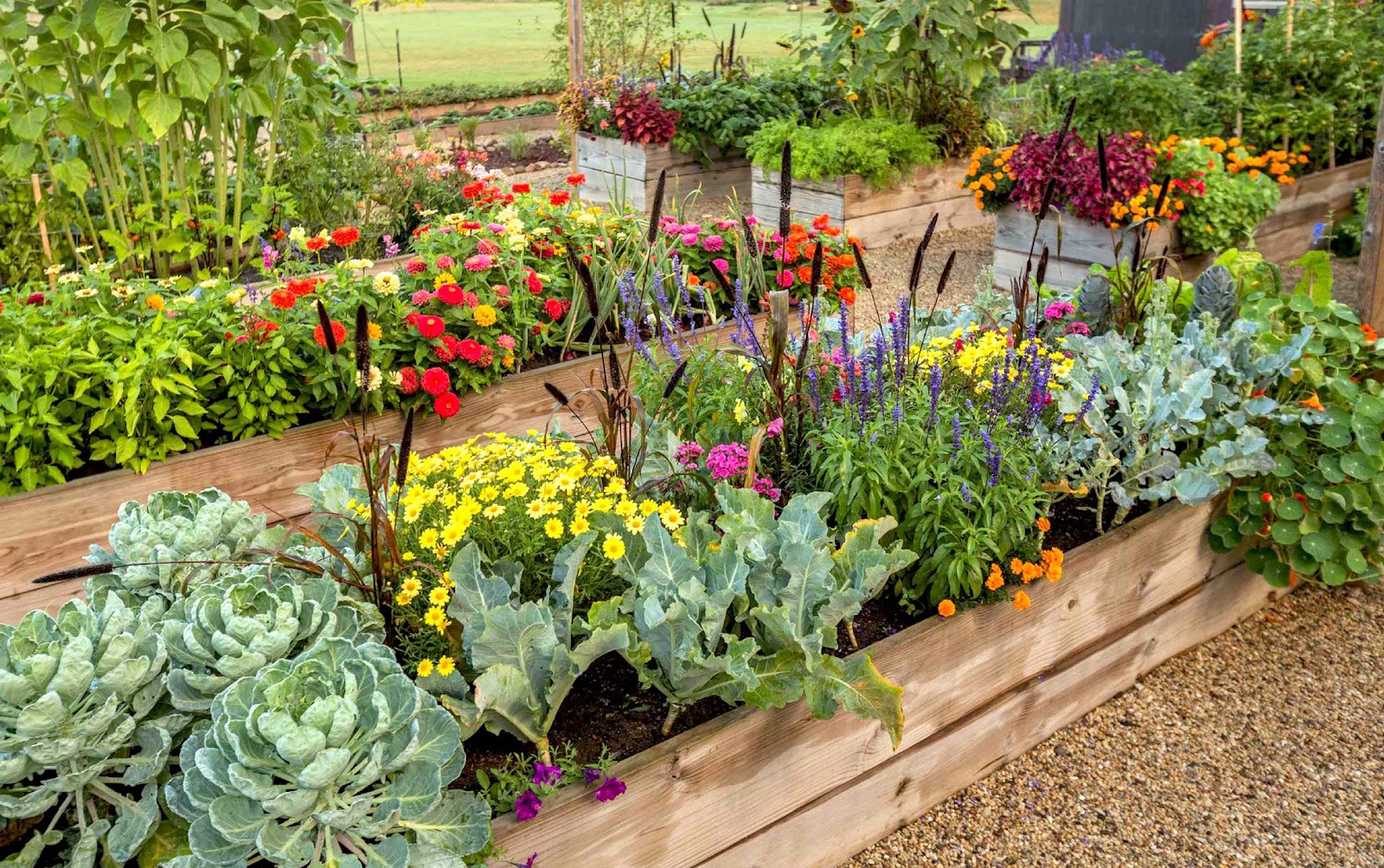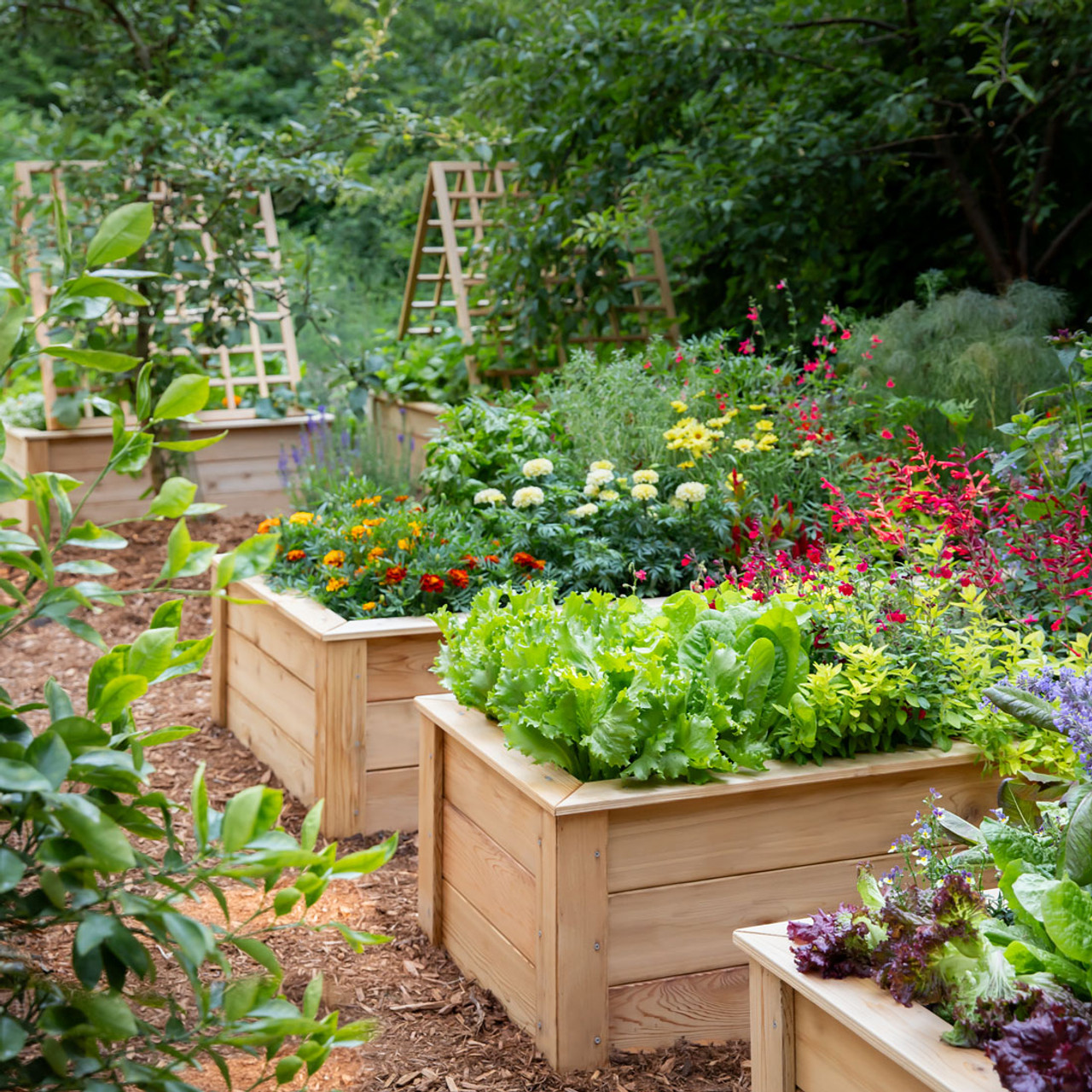Gardening is a timeless pursuit, connecting us with the earth and the source of our sustenance. One innovative approach that has gained immense popularity in recent years is the use of raised garden bed. These elevated structures, essentially containers for soil and plants, offer a myriad of benefits, making them an attractive option for both novice gardeners and seasoned horticulturists.
Introduction to Raised Garden Beds
Garden beds that are independent and built above ground are called raised beds. “Raised” refers to a bed’s soil level that is higher than the soil around it. The phrase “bed” suggests a space that is manageable to operate in without going all the way onto the planting area. Raised beds frequently have frames that resemble boxes around them to offer structural support and stop erosion.
A raised garden bed, also known as a garden box or planter box, is a confined space filled with soil above the ground, often framed by wood, metal, or concrete. These beds provide a contained environment for plants, separating them from the native soil and offering a controlled space for cultivation.
A range of materials, such as brick, rot-resistant wood, landscaping timbers, or concrete blocks, can be used to build raised bed frames. Gardeners who prefer not to bend over while working can also raise their beds.
The Purpose of Raised Bed Gardening
Raised beds are not only more useful, but they also enhance the aesthetic appeal of your kitchen garden when you enter it every day. From a practical standpoint, raised beds enable us to optimize our growing area, enhance drainage, boost output, and easily tend to our plants.
Practical Purpose
- Starting with good soil from scratch in raised beds saves you from having to alter existing soil, which is definitely not the best option for veggies.
- You can lengthen your growing season in the fall and spring by using raised beds, as their soil remains warmer than that of the ground.
- Raised beds allow roots to spread out more vertically, increasing the amount of horizontal space available for planting.
- Inground beds take longer to drain than raised beds.
- Raised garden beds make gardening and harvesting more comfortable and effortless.
Aesthetic Purpose
- Even when nothing is growing, raised beds are a stunning hardscaping element that enhances the beauty of the garden throughout the four seasons.
- Your garden might feel like an outdoor space with raised beds—your very own little haven.
Advantages of Raised Garden Beds – Cultivating Success
Gardening enthusiasts have increasingly turned to raised garden beds, recognizing the numerous advantages these elevated structures offer. Understanding the benefits of raised garden beds is crucial for those seeking to optimize their gardening experience.
Improved Drainage
Raised garden beds provide superior drainage compared to traditional in-ground gardens. The elevated structure allows excess water to drain away efficiently, preventing waterlogged soil and reducing the risk of root diseases like rot.
Optimized Soil Quality
One of the primary advantages lies in the gardener’s control over the soil composition. Raised beds allow for a customized mix of topsoil, compost, and other organic matter, creating an ideal growing medium irrespective of the native soil quality.
Better Pest Management
The elevated nature of raised beds acts as a natural deterrent to certain pests. This physical barrier makes it more challenging for ground-dwelling pests like slugs and snails to reach the plants, reducing the need for chemical interventions.
Ease of Access
Gardening in raised beds offers ergonomic benefits. The elevated height minimizes the need for bending or kneeling, making it more accessible for individuals with physical limitations. This advantage also reduces strain on the back and knees for all gardeners.
Extended Growing Season
Raised beds warm up more quickly in the spring, facilitating earlier planting and an extended growing season. The improved drainage and aeration of the soil also prevent compaction, fostering healthier root systems and overall plant vitality.
Aesthetic Appeal
Beyond their practical advantages, raised garden beds contribute to the visual appeal of outdoor spaces. The framed structure imparts a neat and organized appearance, enhancing the overall aesthetic of the garden.
Building a Raised Garden Bed – A Step-by-Step Guide
Now that the benefits of raised garden beds are clear, let’s delve into the step-by-step process of building one to maximize these advantages.
Materials Needed
- Lumber or Building Blocks – Choose a durable material like cedar or redwood for the frame.
- Screws or Nails – Utilize corrosion-resistant fasteners to assemble the frame securely.
- Geotextile Fabric – Line the interior of the bed with breathable fabric to prevent soil erosion and weed growth.
- Soil Mix – Create a well-balanced mix of topsoil, compost, and other organic matter.
- Level and Square – Use tools to ensure the bed is level and the corners are square.
 Construction Steps
Construction Steps
- Select a Location – Choose a site with ample sunlight, as most plants thrive in full sun.
- Frame Assembly – Cut the lumber or assemble building blocks into the desired dimensions, commonly 4 feet by 8 feet.
- Level the Ground – Prepare the ground by leveling it and removing grass or weeds.
- Install the Frame – Place the frame in the desired location, ensuring it is level and secure the corners with screws or nails.
- Add Geotextile Fabric – Line the interior with geotextile fabric, leaving enough excess to fold over the top edges.
- Fill with Soil Mix – Fill the bed with the customized soil mix, leaving space from the top to prevent spillage.
- Planting – Choose plants according to spacing and sunlight requirements, and plant them in the raised bed.
- Mulch the Surface – Apply a layer of organic mulch over the soil surface to retain moisture and suppress weeds.
Now that you’ve built your raised garden bed, the real magic begins with the planting and ongoing care of your thriving green space. Whether you’re cultivating vegetables, herbs, or ornamental plants, understanding the nuances of planting and maintenance in raised garden beds is essential for a flourishing garden.
Planting Tips – Cultivating Success from the Start
Strategic Plant Placement
When planting in raised beds, consider the mature size and sunlight requirements of each plant. Place taller plants on the north side to prevent shading of shorter ones, ensuring all receive adequate sunlight.
Companion Planting
Leverage the benefits of companion planting to enhance the overall health of your garden. For example, planting basil alongside tomatoes can improve tomato flavor and help repel certain pests.
Optimal Spacing
Be mindful of the recommended spacing for each plant. Overcrowding can lead to increased competition for nutrients and sunlight, potentially impacting the overall yield.
Introduce Vertical Gardening
Utilize the vertical space in your raised bed by incorporating trellises or stakes for climbing plants like tomatoes, cucumbers, or peas. This not only maximizes space but also promotes better air circulation.
Crop Rotation
To prevent soil-borne diseases and ensure balanced nutrient uptake, practice crop rotation within your raised beds. Move plants to different locations each growing season.
Maintenance Tips – Sustaining the Green Haven
Regular Watering
Monitor the moisture levels in your raised bed consistently. While the improved drainage of raised beds prevents waterlogging, it may also necessitate more frequent watering, especially during hot and dry periods.
Fertilization Routine
While raised beds typically start with nutrient-rich soil, regular fertilization is essential to sustain plant growth. Incorporate organic fertilizers or compost to replenish nutrients depleted during the growing season.
Weeding
While raised beds reduce the occurrence of weeds, periodic weeding is still necessary. Regularly inspect and remove any unwanted plants to prevent them from competing with your cultivated plants.
Mulching Magic
Apply a layer of organic mulch over the soil surface to help retain moisture, suppress weeds, and regulate soil temperature. Mulching also contributes to a tidy appearance and protects the soil during extreme weather conditions.
Seasonal Maintenance
At the end of each growing season, perform a thorough cleanup of the raised bed. Remove spent plants, debris, and any weeds. Replenish the soil with compost to fortify its nutrient content.
Protective Covers
Consider using protective covers like row covers or netting to shield your plants from pests or adverse weather conditions. These covers provide an extra layer of defense while still allowing sunlight and air circulation.
Monitor for Pests
Keep a vigilant eye for signs of pests. Elevated beds can deter certain ground-dwelling pests, but aphids, caterpillars, and other insects may still pose a threat. Implement natural pest control methods, such as companion planting or introducing beneficial insects.
Regular Pruning
Maintain the shape and health of your plants through regular pruning. Remove dead or diseased foliage to prevent the spread of diseases and encourage new growth.
Inspect for Diseases
Regularly inspect your plants for signs of diseases such as powdery mildew or blight. Early detection allows for prompt intervention, preventing the spread of diseases throughout the garden.
Encourage Beneficial Insects
Create a hospitable environment for beneficial insects like ladybugs and predatory beetles, which help control pest populations naturally. Avoid using harsh pesticides that may disrupt the delicate balance of your garden ecosystem.
Raised garden bed FAQs
What are the best materials for constructing a raised garden bed?
Cedar and redwood are popular choices for their durability and natural resistance to decay and insects.
How deep should a raised garden bed be?
Since most plant roots need between 6 and 8 inches of soil for optimum root growth, they should have at least 8 inches of soil depth to accommodate plant root systems. For most gardening settings, a depth of 8 to 12 inches is sufficient.
How does the use of geotextile fabric benefit raised garden beds?
Geotextile fabric lines the bed, preventing soil erosion, weed growth, and aiding in water drainage while still allowing air circulation.
How can raised garden beds contribute to pest management?
The elevated structure acts as a natural deterrent to certain pests, and additional protective barriers or netting can be added to further control pests like slugs and snails.
Is it necessary to fertilize raised garden beds regularly?
While raised beds are filled with nutrient-rich soil, regular fertilization with organic fertilizers or compost is recommended to ensure optimal plant growth.
What do you put in the bottom of a raised garden bed?
To assist the soil retain moisture, cover your bed with a layer of absorbent materials like cardboard and shredded newspaper. Reducing the rate of evaporation can also be achieved by covering your bed with a layer of mulch and a well-mixed compost.
Final Words
A raised garden bed offers a practical and aesthetically pleasing solution to many gardening challenges. From improved drainage and soil quality to ease of access and extended growing seasons, the benefits are abundant.
By following a well-considered construction process and incorporating thoughtful planting and maintenance practices, you can create a thriving oasis in your backyard.
Whether you’re a gardening novice or a seasoned enthusiast, the elevated world of raised garden beds invites you to explore the art and science of cultivating a bountiful harvest.

